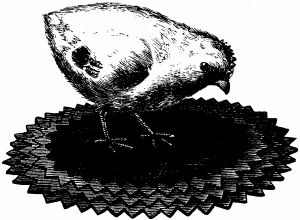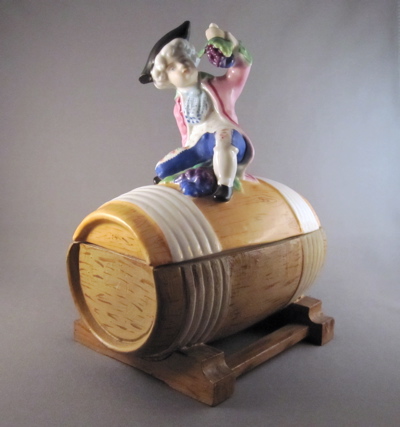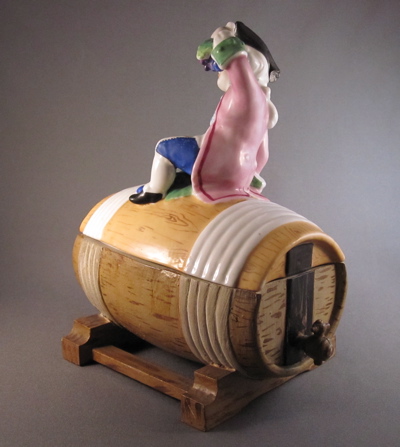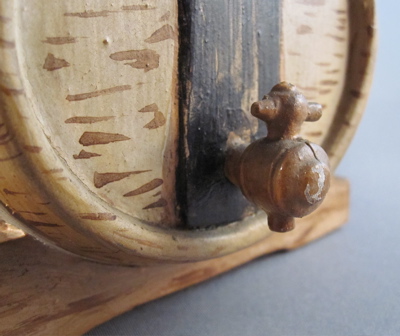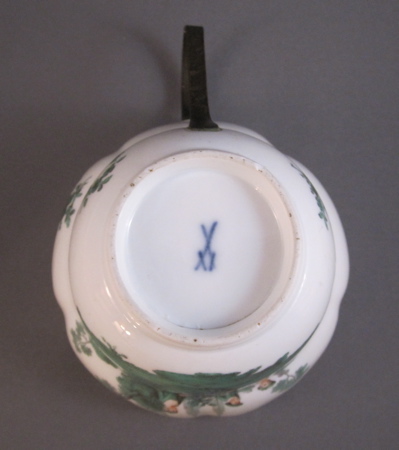What do you do when a bisque doll’s body breaks? Naturally you turn the unbroken doll head in to a pen wiper! At least that is exactly what someone did in the early 1900’s to recycle a broken toy.
Unmarked German bisque doll head with a human hair wig, stationary glass eyes, painted lashes, eyebrows & mouth
Home made pen wipers were common household items and were used to remove excess ink from dip pens. Once the ink was on the page, a paper blotter was used to soak in the excess ink so it would not smear. This pen wiper measures 3-1/2″ tall
Below is an illustration from a Victorian craft book, showing how to make a decorative pen wiper, with the following description: “Girls are always trying to find something which they can make to delight their papas, and a gay little pen-wiper with fresh uninked leaves rarely comes amiss to a man who likes an orderly writing-table”
Photo courtesy of KnitHeaven



